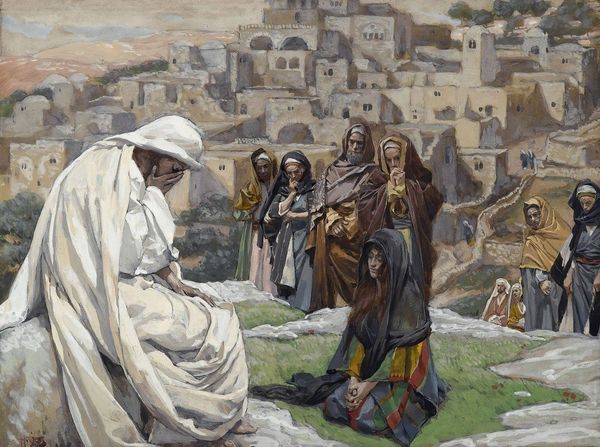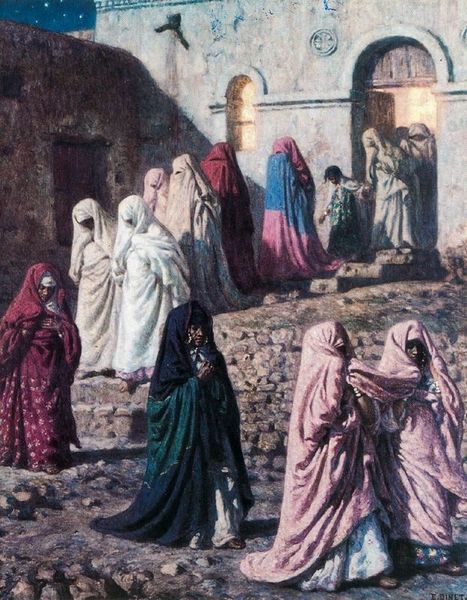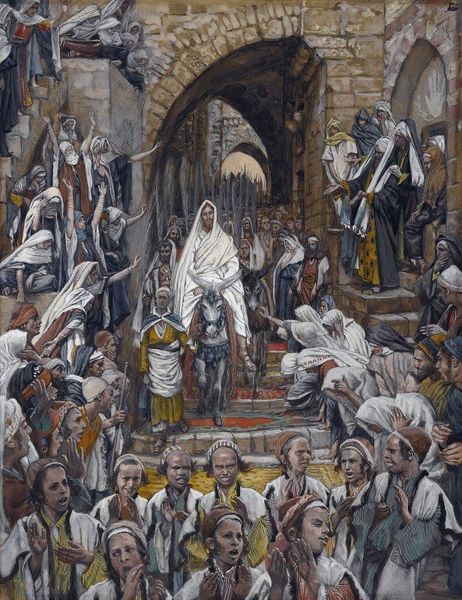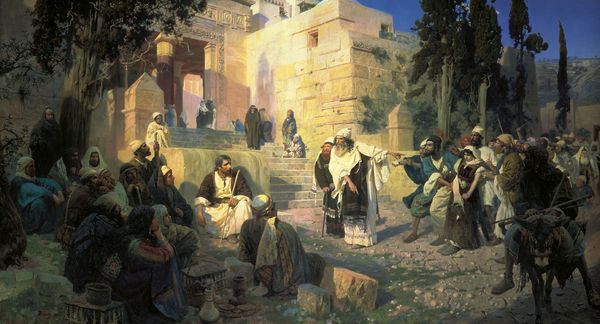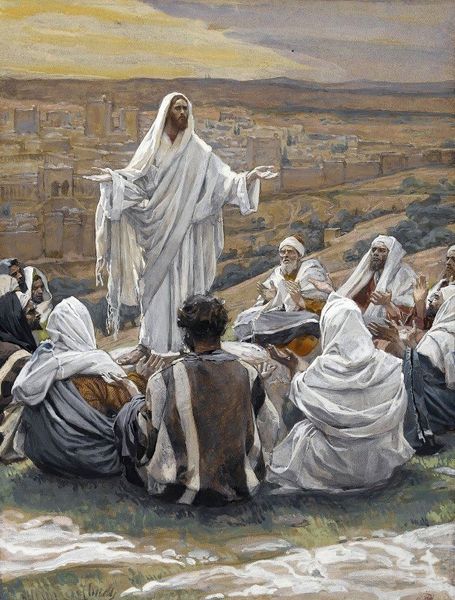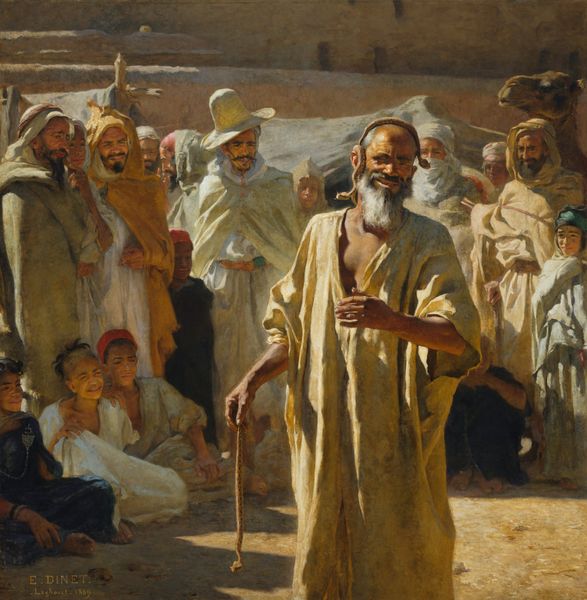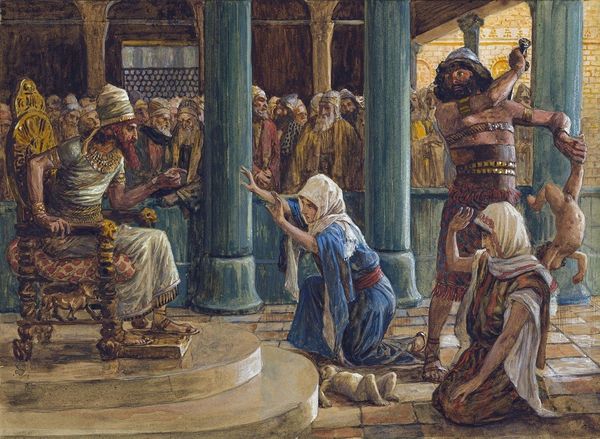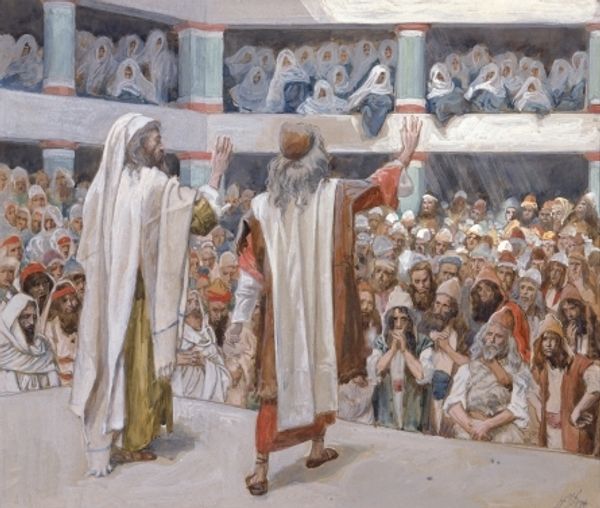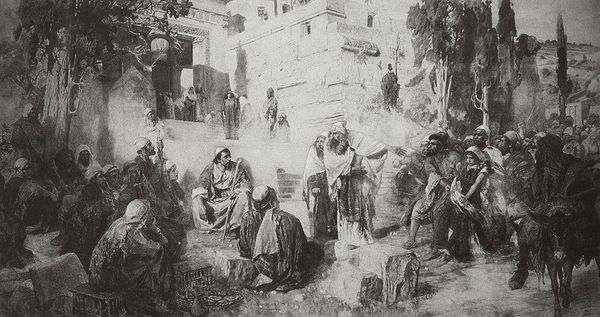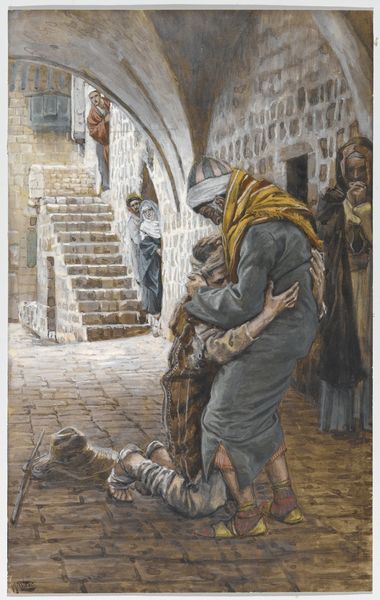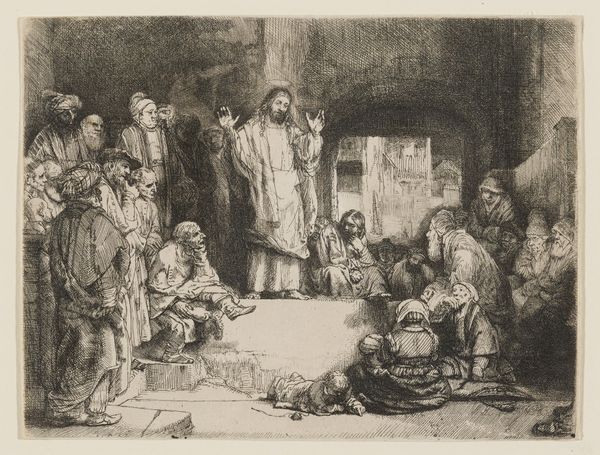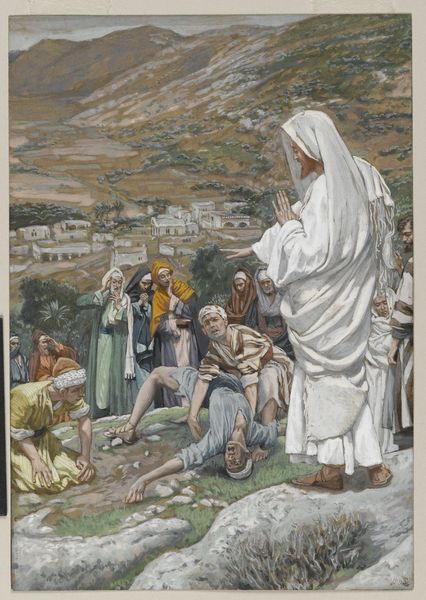
painting, oil-paint
#
narrative-art
#
painting
#
oil-paint
#
painted
#
figuration
#
oil painting
#
underpainting
#
group-portraits
#
history-painting
#
realism
Copyright: Public Domain: Artvee
Editor: James Tissot's "Suffer the Little Children to Come unto Me," painted between 1886 and 1894 in oil, depicts Jesus surrounded by children. There’s an undeniable sentimental quality, but what's truly striking to me is the sheer number of figures, each meticulously rendered. How do you interpret this work, focusing on the material aspects? Curator: It’s easy to get caught up in the narrative, but let’s consider the materiality. Tissot uses oil paint, a medium that allowed him to achieve that smooth, almost photographic realism he’s known for. Look at the way the garments are depicted – the texture of the cloth, the play of light – this reflects the rise of industrial textile production in the 19th century. Can you see how this relates to ideas of wealth and aspiration? Editor: That’s interesting, I hadn’t thought about the clothing in that way! So, you're saying that the detailed rendering, particularly of clothing, speaks to the rise of consumer culture facilitated by mass production? Curator: Precisely. Tissot's commitment to realism might be seen as a direct response to, or reflection of, these shifting economic realities. Consider, too, the implied labor in the creation of this artwork – the artist’s time, the cost of materials. Who was the target audience for such a painstakingly crafted piece? How might their access to these detailed goods and commodities affect its reception? Editor: I see your point. Viewing it this way makes me reconsider its original intention beyond a mere religious scene. Thanks! Curator: Indeed, examining the material and production of the artwork makes us look at the society that created it. I’ve learned a bit more too.
Comments
No comments
Be the first to comment and join the conversation on the ultimate creative platform.
